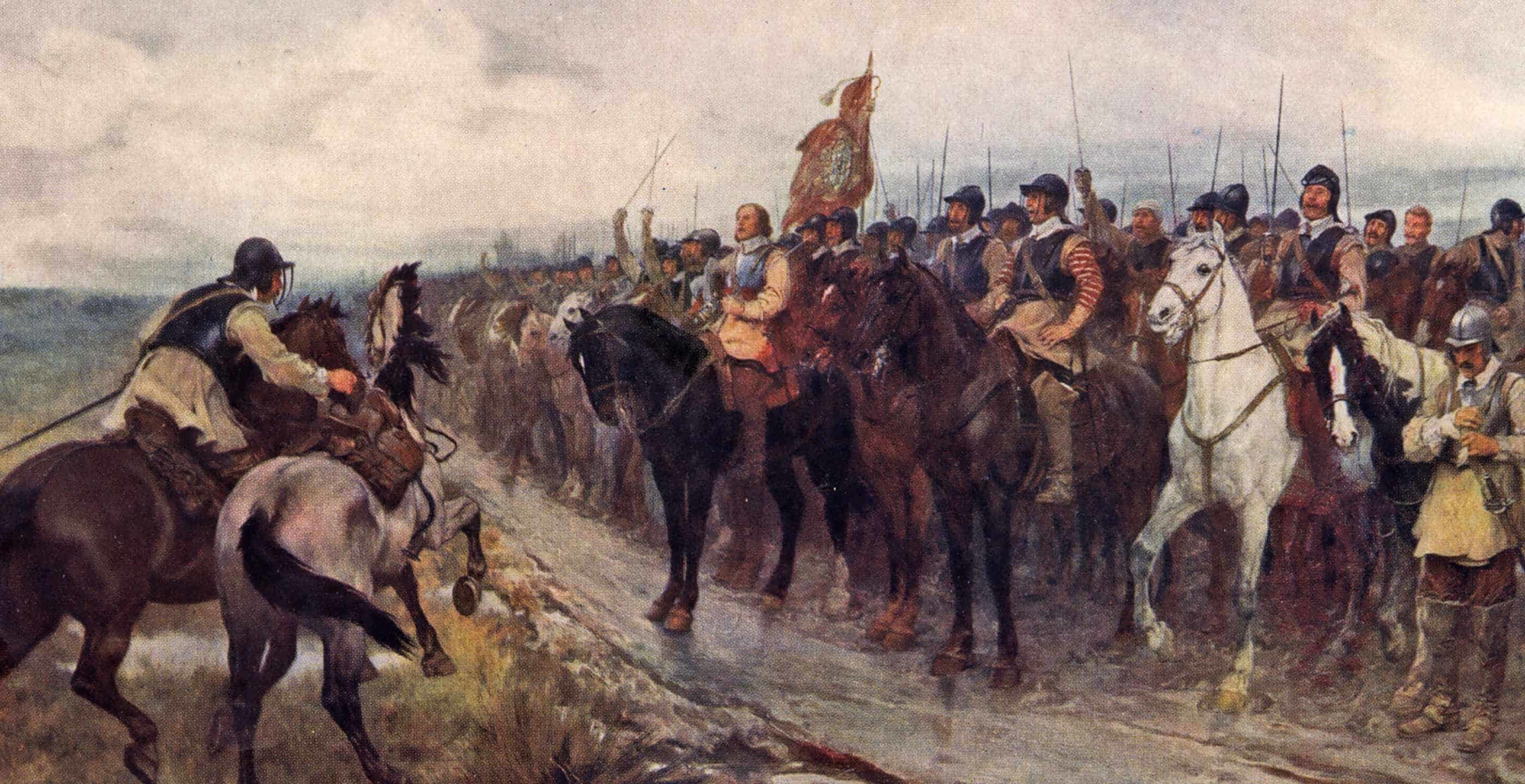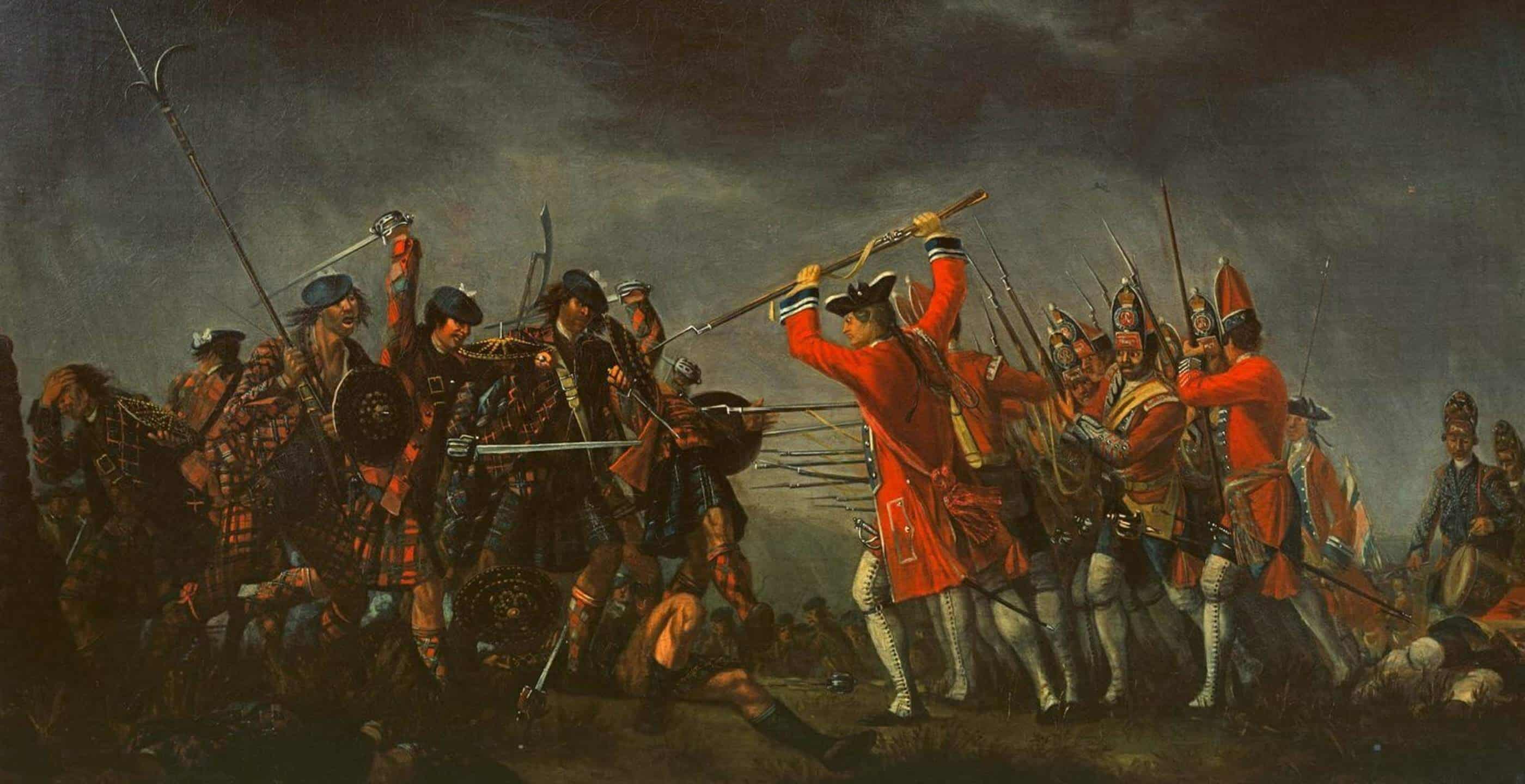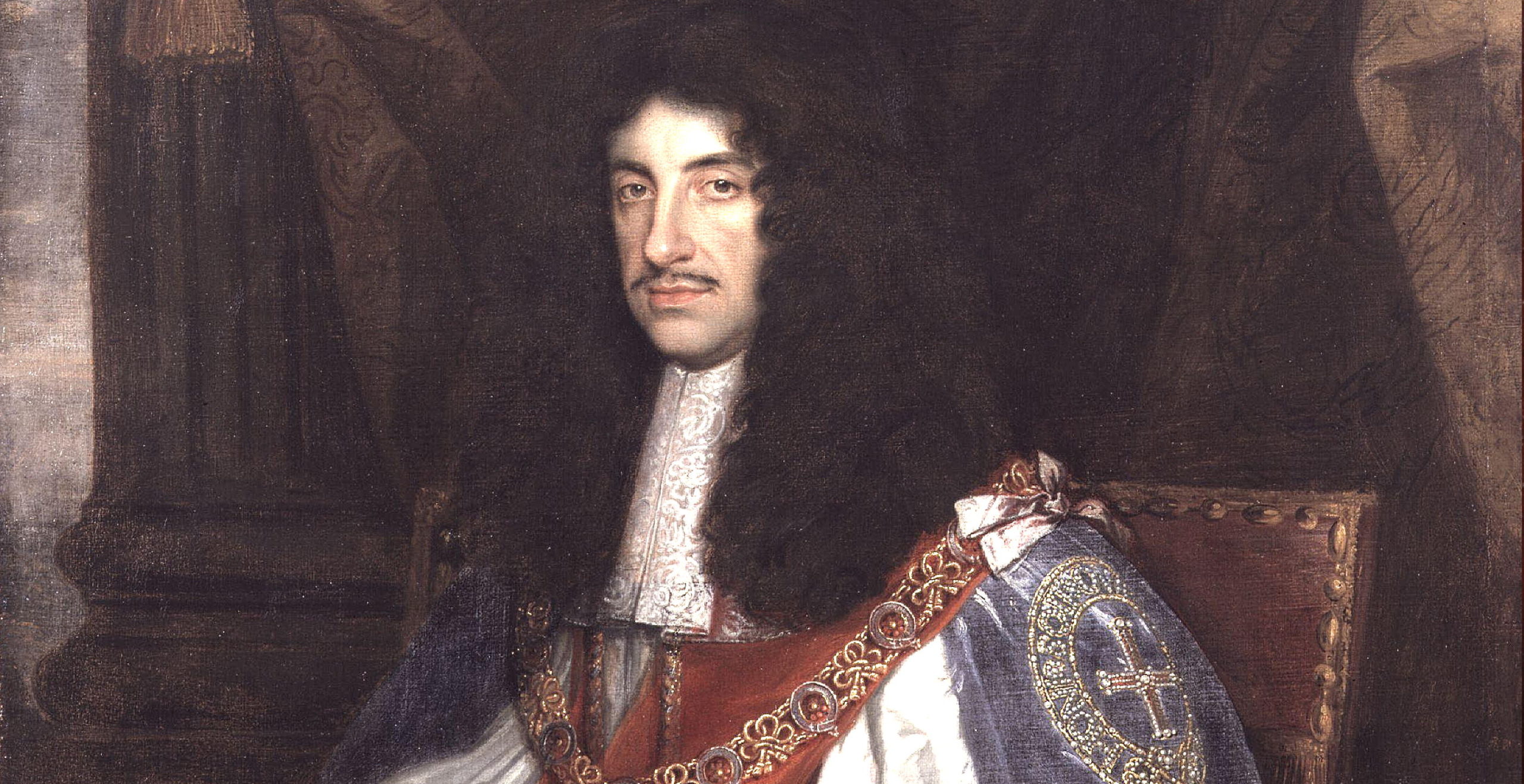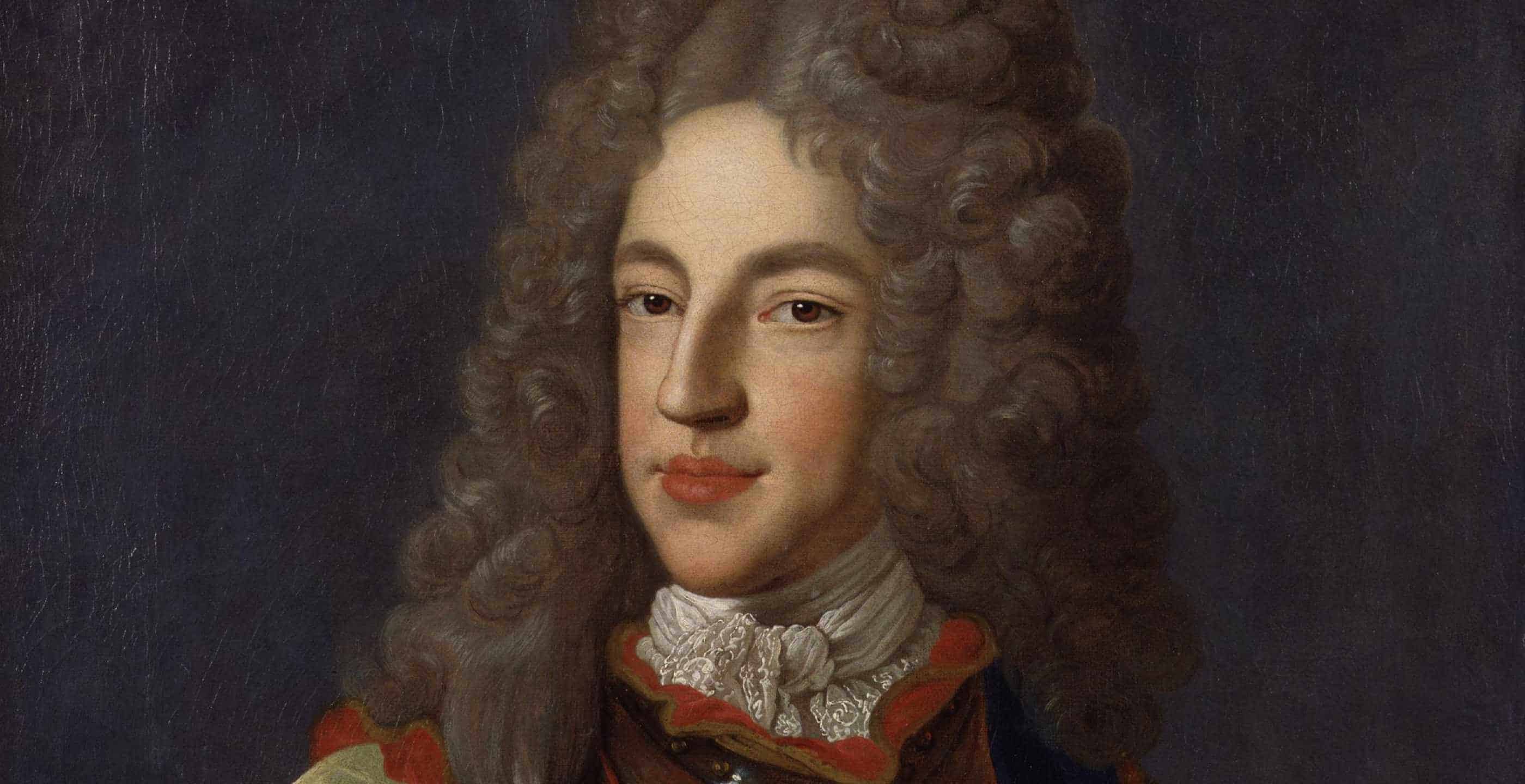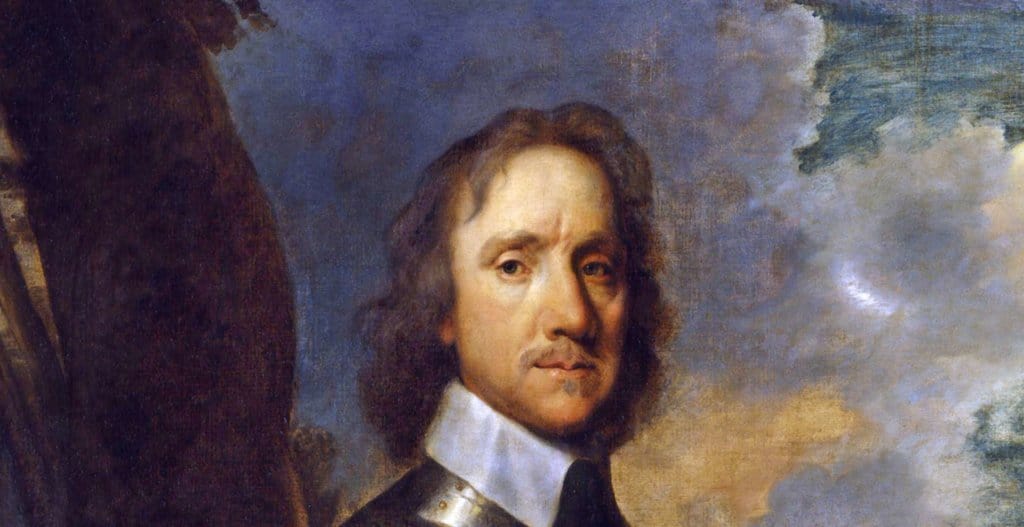After the execution of King Charles I in January 1649 all eyes turned to his son Charles to continue defending his crown. In June 1650 Charles landed in Scotland where he was proclaimed King Charles II. Almost immediately the new King started to gather an army led by Sir David Leslie, a cavalry officer and general who had fought in the English Civil War, the Scottish Civil War and who had been a professional soldier during the 30 Years War. He had previously fought with the Parliamentary forces from 1644 and had won the day at the Battle of Marston Moor, leading a cavalry charge that had defeated the Royalists.
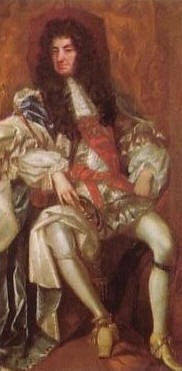 The Scottish Covenanter government had changed sides in the English Civil War and were now supporting the Royalists. They backed Charles as they thought he would help them impose their Presbyterian religious ideals on both England and Scotland. So Leslie now found himself leading a Covenanter army aiming to restore Charles to the English throne.
The Scottish Covenanter government had changed sides in the English Civil War and were now supporting the Royalists. They backed Charles as they thought he would help them impose their Presbyterian religious ideals on both England and Scotland. So Leslie now found himself leading a Covenanter army aiming to restore Charles to the English throne.
The English Parliamentarians had long suspected that the Scots would invade because of the anger at the execution of King Charles I, so when they heard news of his son landing in Scotland, the English launched a pre-emptive invasion of Scotland led by Oliver Cromwell.
Cromwell gathered a veteran force of around 15,000 men, made up of horse and foot; these were very experienced and well equipped professional soldiers from the “New Model Army”. Cromwell led his army over the border at Berwick-upon-Tweed and headed towards Dunbar, the only port town between Berwick and Edinburgh. Once held, Dunbar would operate as a base of the English forces with supplies arriving via sea.
Leslie had gathered a force that outnumbered the English by almost 2:1, however leadership of the Scottish army was dominated by the Kirk Party. The Kirk Party would only allow only strict Covenanters to fight for Scotland and removed over 3,000 experienced officers and experienced soldiers who were replaced with raw recruits.
Keen to avoid a pitched battle, Leslie decided to fight a defensive campaign, preferring instead to station his forces behind strong fortifications around Edinburgh.
By the end of August, Cromwell had still not been able to lead Leslie into a pitched battle and due to illness, bad weather and a lack of supplies (Leslie had ordered a “scorched earth policy”, the destruction of all crops and removal of all livestock from around Edinburgh) Cromwell decided to pull back to Dunbar and the supply fleet.
Leslie saw his opportunity and marched around Dunbar to cut off Cromwell’s retreat via land, and occupied Doon Hill, overlooking Dunbar. This only left the option of evacuating via sea, but since Leslie was now offering a pitched battle, Cromwell (although at a disadvantage) decided to stay and fight.
Because the Church of Scotland was financing the Scots arm, and did not want to waste funds during a prolonged stand-off, Leslie was under pressure to finish the battle as soon as possible.

On 2nd September 1650 Leslie moved his armies down Doon Hill and began to approach Dunbar. These movements were observed by Cromwell who realised there was an opportunity to turn the tables. The Scots positioned themselves in an arc along a stream, Brox Burn, which passed through a deep ravine towards level ground closer to the coast, on the Scottish right flank, a position that left the centre and left flank with little room to manoeuvre.
At dawn on the 3rd of September the English attacked, concentrating their efforts on the right flank and disrupting them by pushing them into the constricted centre and left flanks. Under the weight of the assault the Scots right flank collapsed and the soldiers began to break and flee the battlefield. During the two hour battle, between 800-3000 Scots were killed and 6000-10000 taken prisoner, with the English losses reported as just 20 killed and 60 wounded.
Following the battle Cromwell was able to march to Edinburgh where he was, eventually, able to capture the capital following the defeat of the castle. Prisoners were force-marched towards England, to prevent any attempt at rescue, and imprisoned in Durham Cathedral. Conditions on the march and in the prison were terrible. Of the reported 6000 prisoners, 5000 were marched south resulting in the loss of 2000, a further 1500 dying whilst in captivity and the majority of the survivors sold into slavery. More died as a result of capture than on the battlefield.
The English victory at Dunbar against forces loyal to Charles II was down to tactical flair, exploiting the terrain and the experience of the New Model Army. With numbers against them, they still managed to grab a great victory. Dunbar was also a significant victory for Oliver Cromwell. It played an important roll in his rise to political power.
